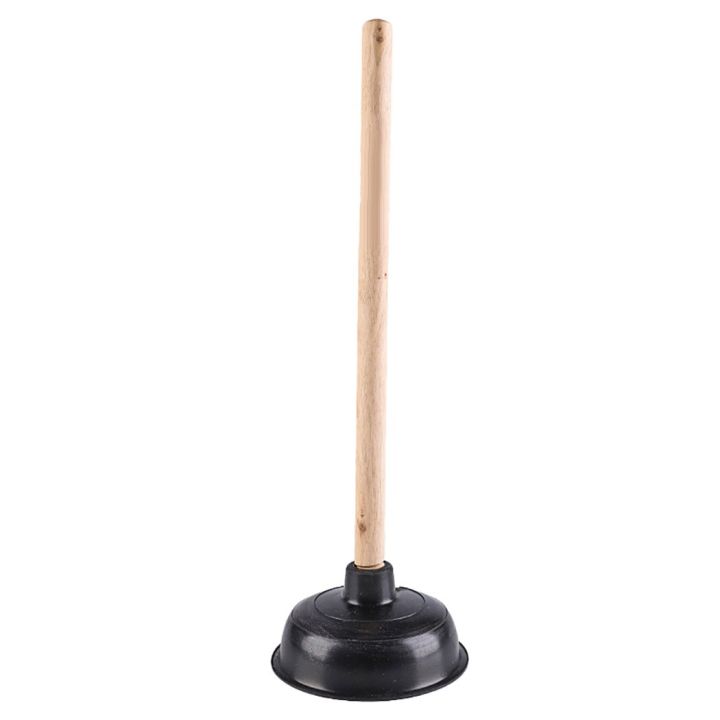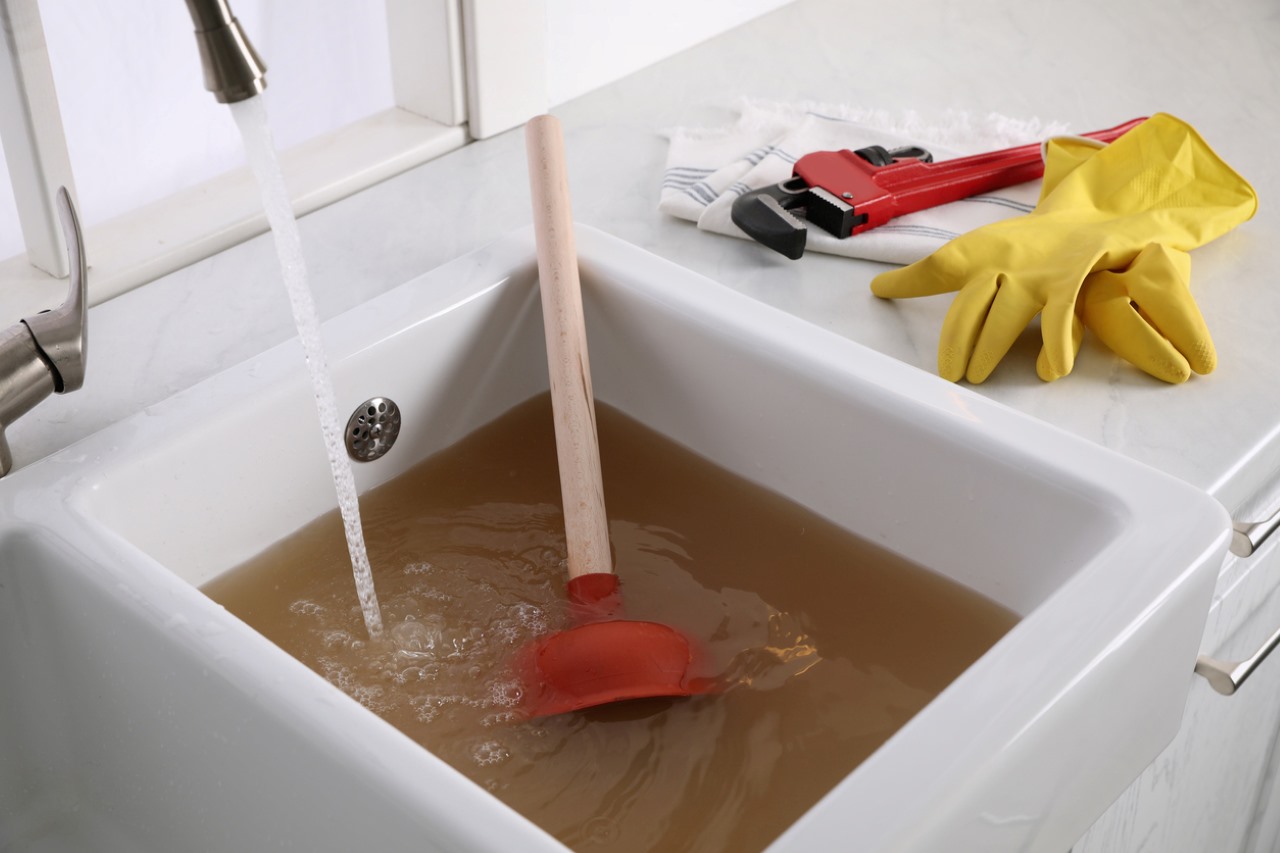Have you been hunting for details on Here's How to Correctly Use a Toilet Plunger?

Intro
Correct maintenance of family drains is necessary for preventing blockages and ensuring smooth water flow. One of the trick devices in every property owner's toolkit is the plunger, along with different drainpipe cleaners created to take on stubborn obstructions effectively. This post discovers how to utilize plungers and drainpipe cleaners successfully to keep your drains moving freely.
Area 1: Understanding Plungers
Sorts of Plungers
There are several kinds of bettors available, each created for various types of drains and blocks. One of the most common types include mug bettors, flange bettors, and accordion plungers.
How Plungers Work
Plungers service the concept of developing pressure and suction to dislodge clogs. When correctly applied over a drain, they produce a vacuum that can pull out debris or break up blockages.
Choosing the Right Plunger
Selecting the right plunger depends on the sort of drainpipe and the nature of the obstruction. Mug plungers are perfect for sinks and tubs, while flange bettors are much better fit for bathrooms due to their layout.
Usual Errors with Bettors
Avoiding these mistakes ensures reliable plunging: improper seal around the drainpipe, not enough pressure, and not clearing bordering particles.
Area 2: Using Plungers Effectively
Prep work
Before plunging, make sure the plunger covers the drain totally and creates a tight seal. Clear any type of noticeable debris around the drain opening.
Strategy
Beginning with gentle plunging activities to develop suction. Increase stress slowly, using a steady rhythm. Repeat as essential up until the drainpipe removes.
Troubleshooting Tips
If diving doesn't function, attempt changing the seal, using petroleum jelly for a far better seal, or utilizing a various type of bettor.
Area 3: Understanding Drainpipe Cleaning Company
Types of Drainpipe Cleaning Company
Drain cleaners can be chemical or chemical. Chemical cleansers use strong chemicals to liquify obstructions, while enzymatic cleaners use natural enzymes to break down organic matter.
Just How Drainpipe Cleansers Work
Chemical cleaners respond with obstructions to liquify them, while enzymatic cleaners break down organic materials like hair and grease without damaging pipes.
Safety and security Considerations
Constantly use handwear covers and eye security when utilizing chemical drain cleaners. Make certain ample air flow and comply with producer instructions carefully.
Eco-Friendly Alternatives
Think about using vinegar and baking soft drink or enzyme-based cleansers for environmentally friendly choices that are much safer for pipes and the atmosphere.
Section 4: Utilizing Drain Cleansers Efficiently
Application Techniques
Pour chemical cleansers straight right into the drainpipe opening. Enable them to work for the recommended time prior to purging with hot water. Chemical cleansers ought to sit over night.
Safety measures
Prevent blending various types of cleansers, as this can produce harmful fumes. Never utilize chemical cleaners together with a bettor, as spilling can happen.
Managing Persistent Blockages
For consistent clogs, consider using a pipes serpent or calling an expert plumbing technician to avoid damage to pipelines.
Final thought
To conclude, understanding just how to make use of plungers and drainpipe cleansers efficiently is vital for preserving healthy pipes systems. By selecting the right devices and methods, homeowners can tackle minor obstructions and protect against significant plumbing concerns down the line.
How To Properly Use A Plumbing Snake To Clear Drains
When any drain clogs in our home arise, we tend to gravitate toward the plunger and little else. In cases where the plunger and its vacuum-created pressure are not able to clear clogs, many immediately move to harmful chemicals or simply call their plumber to fix the issue.
we’re happy to help with all drain cleaning needs and concerns. This includes informing you on a few other home remedies you may have at your disposal for minor to moderate clogs, one of which is the use of a plumbing snake. Many people have never used one of these before – let’s go over the steps to take when your drain clogs and you have a plumbing snake available.
Attempt Plunger Use
The first step here, as we noted above, should indeed be to grab your plunger when you notice a drain clog and attempt to resolve it this way. If you’re unsure how to use a particular type of plunger, our plumbers can answer any questions you have. If this doesn’t do the trick, however, you move on to the snake.
Locate And Prepare Snake
A plumbing snake is a metal or plastic device that’s generally about a quarter of an inch thick. It’s design with significant extensions, meant to reach down into your clogged drain and push the clog out. Snakes also contain drain augers that will latch onto and push stubborn blockages.
If your plunger doesn’t clear a clog, locate your snake and bring it to the drain in question. We also recommend keeping a bucket nearby to collect the clog once you pull it out, plus we’d advise wearing goggles and possibly protective gloves.
Feed Snake
Once you’re ready to go, feed the snake slowly down the drain, using the crank device it comes with to keep it moving until it finds the clog. Once this happens, much of the clog will be latched onto the coil so you can pull it out, while the rest will simply break up and flow downward.
Detach Debris
Remove the snake slowly from the drain, and once you’ve done so, pick off any debris that’s stuck to the coil. This is another area where wearing gloves is a must.
Flush Drain
Finally, take a few minutes to ensure the snake has done its job correctly. If you’ve been using it on a toilet, flush the toilet a couple times and make sure everything flows well. If you’ve used it on a different drain, flush it with some room temperature water.
https://www.mybuddytheplumber.com/blog/how-to-properly-use-a-plumbing-snake-to-clear-drains/

Application Techniques
Pour chemical cleansers straight right into the drainpipe opening. Enable them to work for the recommended time prior to purging with hot water. Chemical cleansers ought to sit over night.
Safety measures
Prevent blending various types of cleansers, as this can produce harmful fumes. Never utilize chemical cleaners together with a bettor, as spilling can happen.
Managing Persistent Blockages
For consistent clogs, consider using a pipes serpent or calling an expert plumbing technician to avoid damage to pipelines.
Final thought
To conclude, understanding just how to make use of plungers and drainpipe cleansers efficiently is vital for preserving healthy pipes systems. By selecting the right devices and methods, homeowners can tackle minor obstructions and protect against significant plumbing concerns down the line.
How To Properly Use A Plumbing Snake To Clear Drains
When any drain clogs in our home arise, we tend to gravitate toward the plunger and little else. In cases where the plunger and its vacuum-created pressure are not able to clear clogs, many immediately move to harmful chemicals or simply call their plumber to fix the issue.
we’re happy to help with all drain cleaning needs and concerns. This includes informing you on a few other home remedies you may have at your disposal for minor to moderate clogs, one of which is the use of a plumbing snake. Many people have never used one of these before – let’s go over the steps to take when your drain clogs and you have a plumbing snake available.
Attempt Plunger Use
The first step here, as we noted above, should indeed be to grab your plunger when you notice a drain clog and attempt to resolve it this way. If you’re unsure how to use a particular type of plunger, our plumbers can answer any questions you have. If this doesn’t do the trick, however, you move on to the snake.
Locate And Prepare Snake
A plumbing snake is a metal or plastic device that’s generally about a quarter of an inch thick. It’s design with significant extensions, meant to reach down into your clogged drain and push the clog out. Snakes also contain drain augers that will latch onto and push stubborn blockages.
If your plunger doesn’t clear a clog, locate your snake and bring it to the drain in question. We also recommend keeping a bucket nearby to collect the clog once you pull it out, plus we’d advise wearing goggles and possibly protective gloves.
Feed Snake
Once you’re ready to go, feed the snake slowly down the drain, using the crank device it comes with to keep it moving until it finds the clog. Once this happens, much of the clog will be latched onto the coil so you can pull it out, while the rest will simply break up and flow downward.
Detach Debris
Remove the snake slowly from the drain, and once you’ve done so, pick off any debris that’s stuck to the coil. This is another area where wearing gloves is a must.
Flush Drain
Finally, take a few minutes to ensure the snake has done its job correctly. If you’ve been using it on a toilet, flush the toilet a couple times and make sure everything flows well. If you’ve used it on a different drain, flush it with some room temperature water.
https://www.mybuddytheplumber.com/blog/how-to-properly-use-a-plumbing-snake-to-clear-drains/

As a serious person who reads on Here's How to Correctly Use a Toilet Plunger, I was thinking sharing that excerpt was important. If you enjoyed reading our blog post if you please consider to pass it around. Thanks a lot for your time. Don't forget to stop by our site back soon.
Further Details